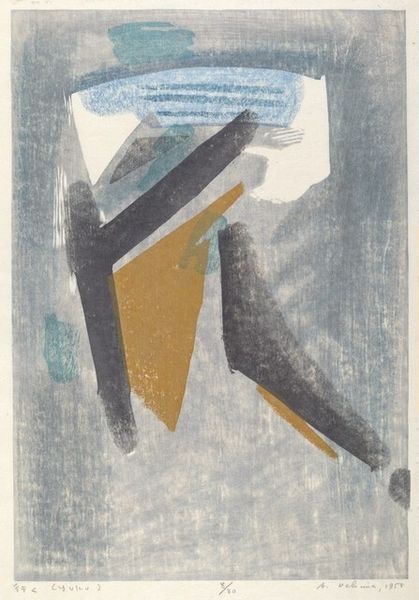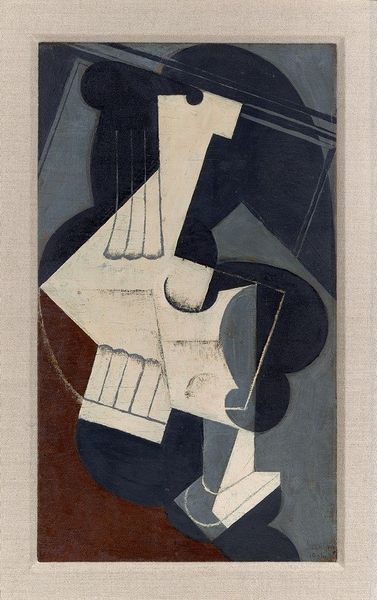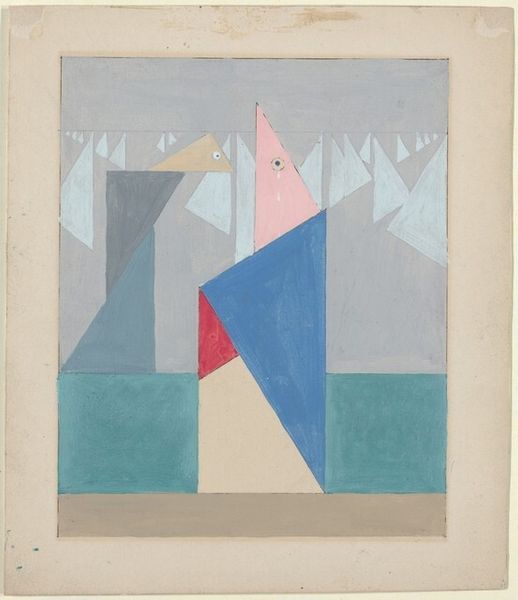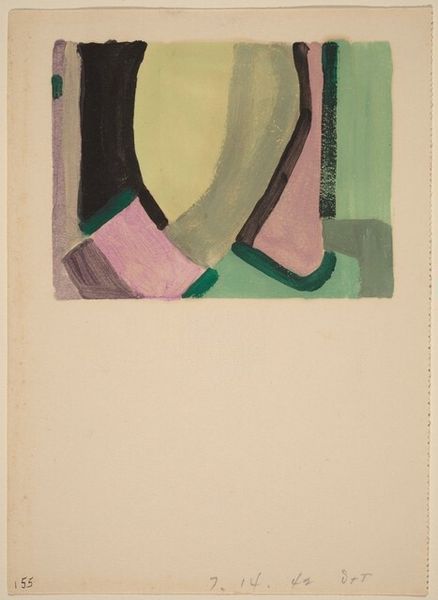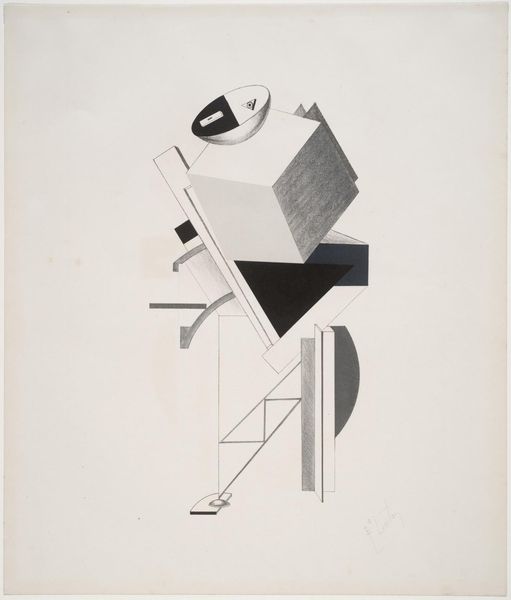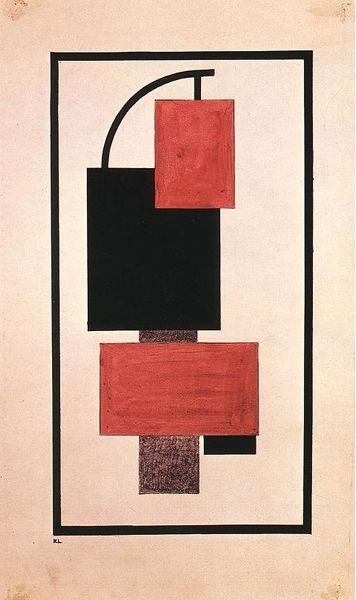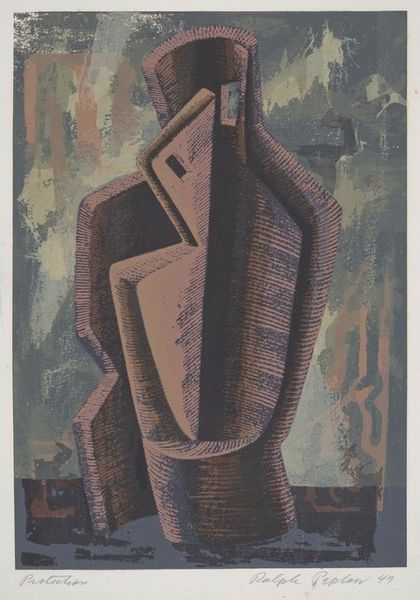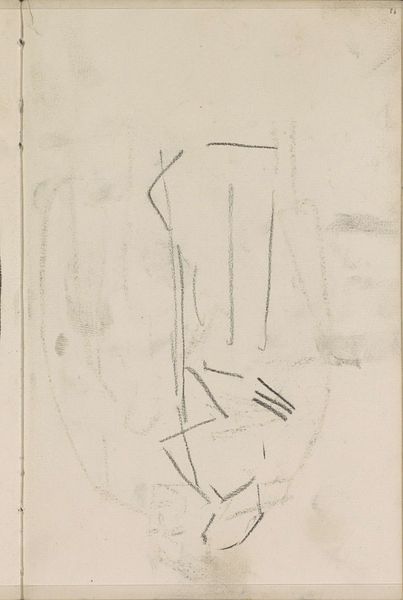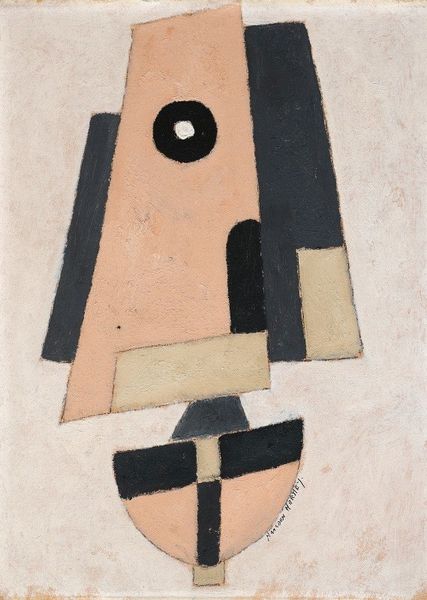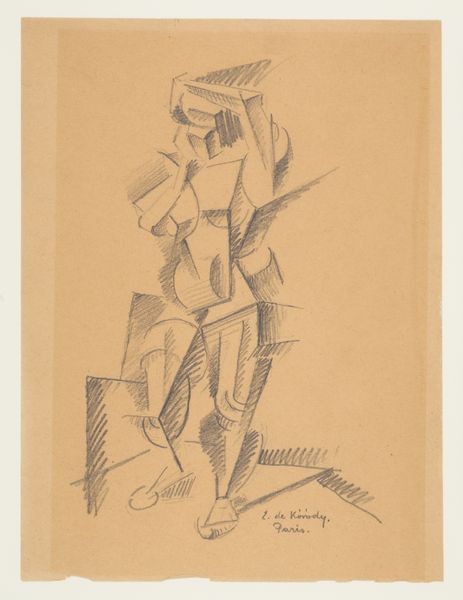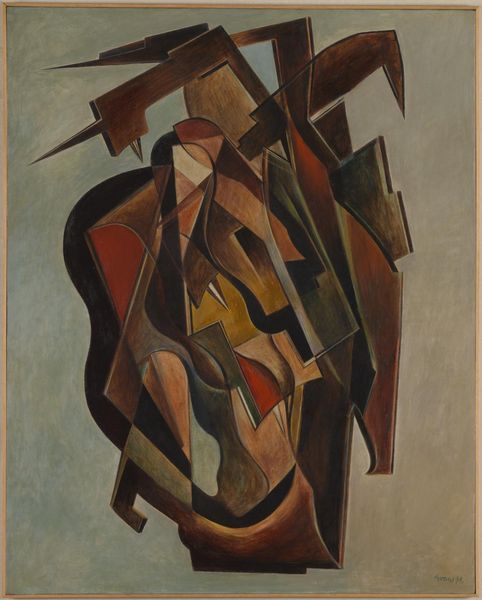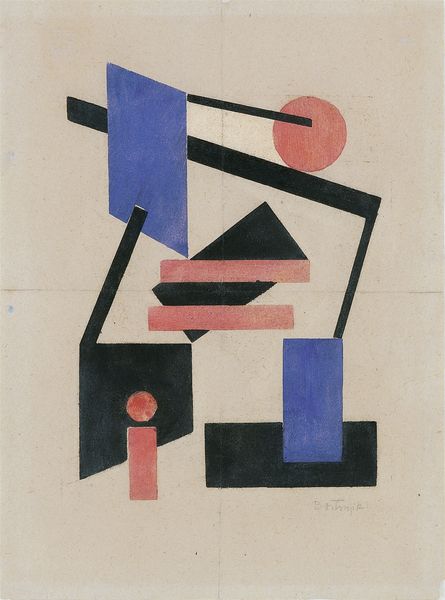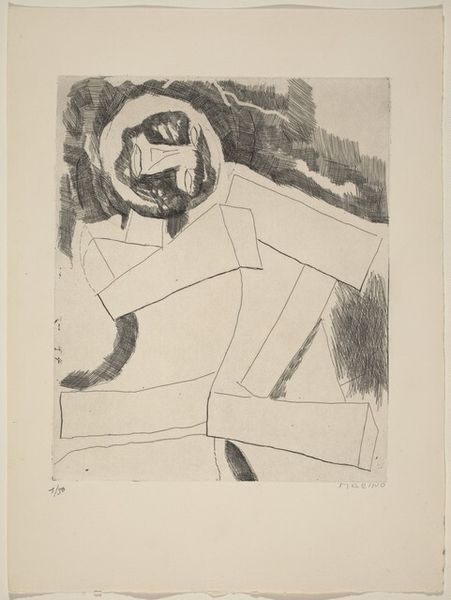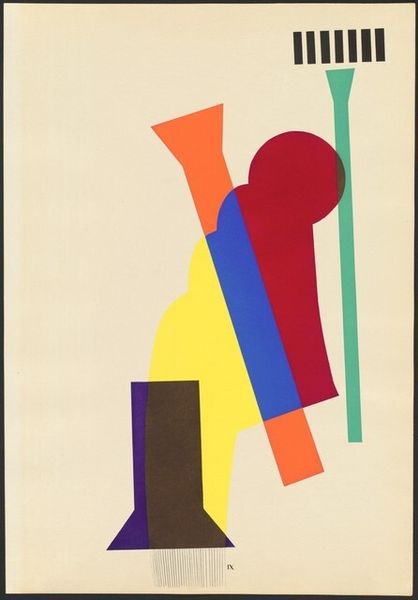
drawing, paper, graphite
#
portrait
#
drawing
#
cubism
#
paper
#
abstraction
#
graphite
Dimensions: overall: 55.8 x 37.3 cm (21 15/16 x 14 11/16 in.)
Copyright: National Gallery of Art: CC0 1.0
Curator: Before us is Jacques Lipchitz's 1916 graphite drawing, Pierrot. Editor: Stark! My first impression is that it’s quite an assertive composition. The use of flat planes in such somber hues—primarily blacks and grays, offset by that rusted orange—lends the figure a sense of gravity, or even mourning. Curator: Indeed. It's intriguing to consider the artist's selection of graphite and paper as means to depict this character from the commedia dell'arte. Typically, Pierrot is portrayed with flowing white fabrics and ruffs. Editor: But the artist decidedly departs from tradition. By distilling Pierrot into such sharp geometric forms, Lipchitz isn't just rendering a subject. The manipulation of space through line and shading creates something almost architectural—a semiotic restructuring of the tragic clown. Look at the triangular facets composing the figure, creating dramatic shadows. Curator: And yet, the drawing possesses a certain ambiguity. Lipchitz produced this Pierrot in 1916, as Europe found itself in the maelstrom of war. Perhaps these bold cubist choices weren't only artistic explorations but, in part, an echo of a fragmented society finding expression through redefined materiality and form. Editor: I agree, the interplay between material representation and formal abstraction is a fascinating duality to this early Cubist piece. The very nature of rendering recognizable form through fragmented perspectives forces us to consider the multifaceted and constructed nature of identity. The shadow suggests some degree of inner torment within. Curator: Considering that many artists working within the Cubist and Futurist styles actively responded to the mechanized realities of World War I, it invites viewers to consider the social forces shaping art production during that time. Editor: It’s a masterful exercise in using stark composition to conjure a specific emotional tonality. I think its enduring power stems from its stark emotional impact. Curator: Indeed. It pushes us to re-evaluate art’s inherent properties. Editor: Well said. Hopefully, this experience allows each visitor to recognize themselves as the object and the subject simultaneously.
Comments
No comments
Be the first to comment and join the conversation on the ultimate creative platform.
